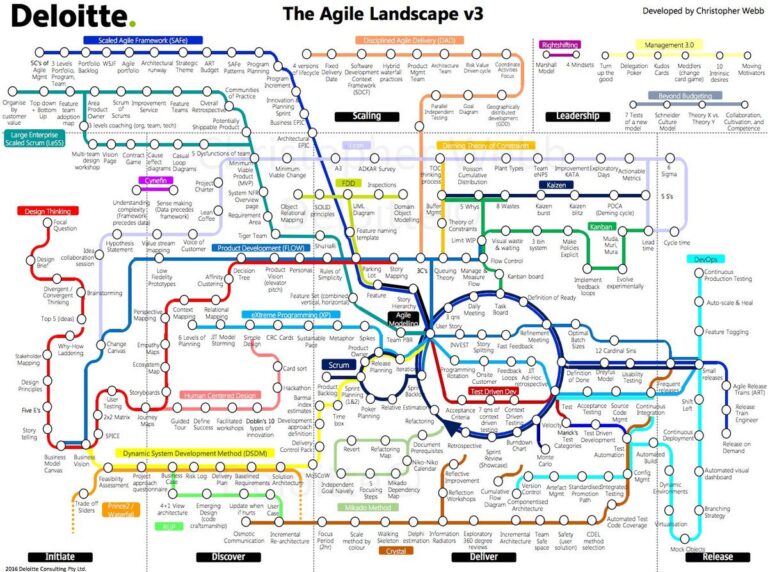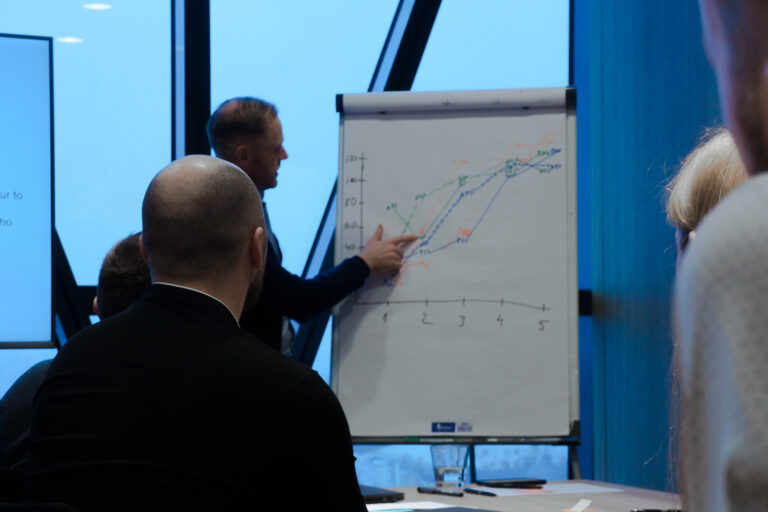Practices for greater team efficiency (Part 1)
Practices for greater team efficiency (Part 1)
It is obvious when a team lacks motivation, drive and efficiency: productivity drops, dissatisfaction grows and people leave. To counter this trend – strong team practices have to be established for each team. This post summarises some of the ways of working related to team autonomy and work planning practices that almost any team can adopt to increase their drive and efficiency.
Team autonomy
Dependencies on outside factors create the greatest drag for any team. Dependencies mean slowing down because of waiting on other teams, and anger because work cannot move on. Therefore, one of the first issues that needs to be resolved is how to create a team where all the necessary competencies and skills are inside the team – a cross-functional team – a team that does not depend on any other team for delivering value. Without a cross-functional team, a lot of energy (on the team and management level) will be wasted on managing dependencies. This energy is better spent on building autonomous teams.
Team autonomy is not only difficult to achieve, it is also a challenge to maintain it. Often the expertise of a team may be required for projects outside the team – attempts will be made to drain some of the team’s resources and time. Autonomy also is maintained by keeping the team stable – not shifting the team members in or out of the team. And, finally, constantly maintaining the cross-functionality of a team means that – to avoid becoming dependent on other teams/ experts – the cross-functional team members will have to learn new skills. This requires people to be willing to acquire new skills and management to give all the required learning time to their employees.
Work planning practices
The main job of a manager or a team lead is to set priorities, create a strategy, and give direction to the team. S/he should let the team figure out how to reach the set goals and refrain from micro-management (trying to tell how should work be done or knowing everything that the team members do). Calibrating and adjusting the strategic direction is a constant process – customers, market, competition, corporate targets and stakeholders – all have a significant impact on the priorities. Therefore, a constant reprioritisation of tasks is required by the managers – so that the team members know what is the priority at any moment in time. The plan of where to go and the tasks that need to be done have to be up-to-date all the time. That is the job of a manager to keep this information updated.
While the long-term plans may have more abstraction because they will inevitably change, the short-term plan has to be clear, understandable, refined, discussed and agreed with the team. In general, people prefer to keep some things stable in their lives. From business planning cycles – the only stability can be in short-term plans. Therefore, it is wise for a team to do their planning for short periods of time (1-2-3 weeks max). The longer the time iteration – the less accurate the plan will be and the harder it is to predict the results. Planning should occur on a weekly or biweekly basis – this creates feelings of stability and predictability because there is a plan in place if only for a week.
The most effective planning practices take into account the resource capacity and create buy-in from the team’s perspective – the team commits to complete a certain amount of work and feels accountable for their commitment; an unwritten contract is established between the manager and the team with buy-in on both sides. This is best achieved when a manager/ team leads presents clear goals to be reached in the next short-term-planning cycle, as well as prioritised tasks that would contribute towards this goal. However, the team can challenge the manager, discuss and reshape the goal so that both sides agree on the right wording and deem it reachable within the set period of time. This is followed by the team pulling the tasks from the prioritised backlog – tasks that the team members consider to contribute towards the agreed goal and are feasible to be completed within the deadline. Once the team thinks their capacity is full – the scope is fixed for the next time iteration and the team can plan how to complete these tasks and achieve the objectives. Thereby, the autonomy of a team is preserved while establishing greater ownership, creating a commitment and agreement inside the team.
The work that will have to be done in future, however, is not created in a vacuum. The future work is usually something that the manager discovers earlier. It is very important to introduce the future (medium-long term) work to the team on a regular basis. Managers can get useful feedback about future work from his/her team. For example, in some cases, some tasks may seem too big or complex for the team and require splitting up, in other situations – the team may ask for extra information and explanations which the manager should provide. The practice of reviewing future work is sometimes called “refinement” because work items are refined – reviewed together with a team with the objective of collectively learning about the future work and discussing any misunderstandings or unclear parts of the work that should be clarified before the team can start working on these tasks.
Setting the team's ways of working
Telling others how to work is the least effective way to get some change. As Tuckman’s stages for group development suggest – all teams go through the cycle of forming–storming–norming–performing model (read more in my guide for creating teams). The norming phase is where a team should agree on how they will work. Not be told by externals or put on some company policy – but decide by themselves – ‘How will we work together?’. Team members need to reach an agreement on their collaboration, their internal processes and practices. It has to be a well-facilitated discussion. And it is a conversation that has to be repeated when a need arises – that is when things are not going smoothly, the team has to have the wisdom to pause, reflect, review, brainstorm, converge and decide on what they will change to get back on track. These are so-called self-organised teams – independent, autonomous, self-sufficient, mature teams that don’t depend on others and can take responsibility for their own performance, growth and internal discipline.
In summary, greater team efficiency can be reached when the team’s independence from other teams is established and maintained and when the team consists of all the necessary skills and competencies to deliver value (cross-functional team). The team members have to regularly up-skill themselves by learning new things and managers have to give the necessary time and place for this growth to happen. The work planning can be made more efficient if a manager regularly updates the short-medium term vision, keeps a list of prioritised goals and tasks, and regularly shares/ discusses these priorities with the team. The most effective work planning approach is when a team has a say over the goals they need to achieve and they are given an opportunity to choose which tasks they will work on in the short term (1-2 weeks).
Check out the 2nd part of this article to learn more ways of working related to everyday work execution, continuous improvement and building trust – almost any team can adopt these to increase their drive and efficiency!







